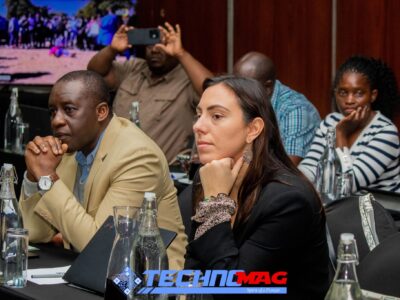In a surprising but not unfathomable announcement this week, Kenya’s Independent Electoral and Boundaries Commission (IEBC) confirmed that the IT infrastructure deployed during the country’s recently nullified presidential election will again be utilised in the approaching re-run on October 17.
The Kenyan Supreme Court last month annulled the result of the August 8 election – which had appeared to have been won by incumbent President Uhuru Kenyatta –after ruling that the electronic transmission of vote tallies was flawed.
Source: AFKINSIDER
This came after a number of issues with the use of technology during the election itself, not least when an election official in charge of voting technology was killed, and followed a number of technological failures at the previous election.
Yet, the IEBC plans to plough on with its use of the Kenya Integrated Election Management System (KIEMS) system, implemented by OT-Morpho/Safran, though it says it will also add infrastructure to ensure the integrity of the process and assimilate further experts into its IT department.
An exclusive contract with mobile operator Safaricom has also been extended to support the relay of results.
Frankly, this decision beggars belief. The technology applied during the 2013 election, when Kenyatta was first elected, completely failed, with voter registrations and the like being forced to fall back on a manual system.
In August, they failed to the extent that an entire presidential election had to be declared invalid.
In spite of its adjustments, how the IEBC thinks anything can possibly be much different next time around is astounding. Such systems take years to put in place and hone to the point of being democratically accountable. A flawed system cannot become a good system in the space of a couple of months.
Presidential election at the mercy of tech
Kenya rightly has a reputation as a technological hub, with innovations such as M-Pesa and Ushahidi famous the world over. But the tech-savviness that has made Ngong Road a playground for techies and entrepreneurs does not extend across the country, nor does quality, secure internet connections and reliable power.
The country should take as a warning the fact that even long-entrenched democracies in the developed world have not adopted tech during election processes to the extent Kenya did in 2013 and 2017.
In the UK general elections in June, Brits went to the polls and put a cross in a box. With a pen or pencil. Outdated? Perhaps. Effective nonetheless? Of course.
Globally, only 14 countries have gone so far as to introduce electronic voting, while security firms have commented on the lack of security systems when it comes to electronic voter data.
Elections and political parties are inevitably popular targets for hackers. The Kenyan opposition claimed such hacking occurred this time round. The Supreme Court has found no evidence of that thus far, but the potential for problems should not be ignored.
It was a stunning and welcome development when even President Kenyatta – deprived of an election he believed he had won – abided by the Supreme Court’s ruling that a re-run must occur.
Kenyans might not get so lucky twice, making the fact that the IEBC will stick by its flawed ICT systems all the more unbelievable.
Kenya’s reputation as a tech hub is not in doubt. There will, of course, be a place for technology in future polls.
Yet the IEBC would do well to take a note of what is happening in other democracies across the world, where tech adoption is limited and slow to ensure the veracity of election results. It has gambled twice on tech at elections, and lost.
To gamble a third time, and with the same flawed system, could unleash forces outside of its control.














Comments